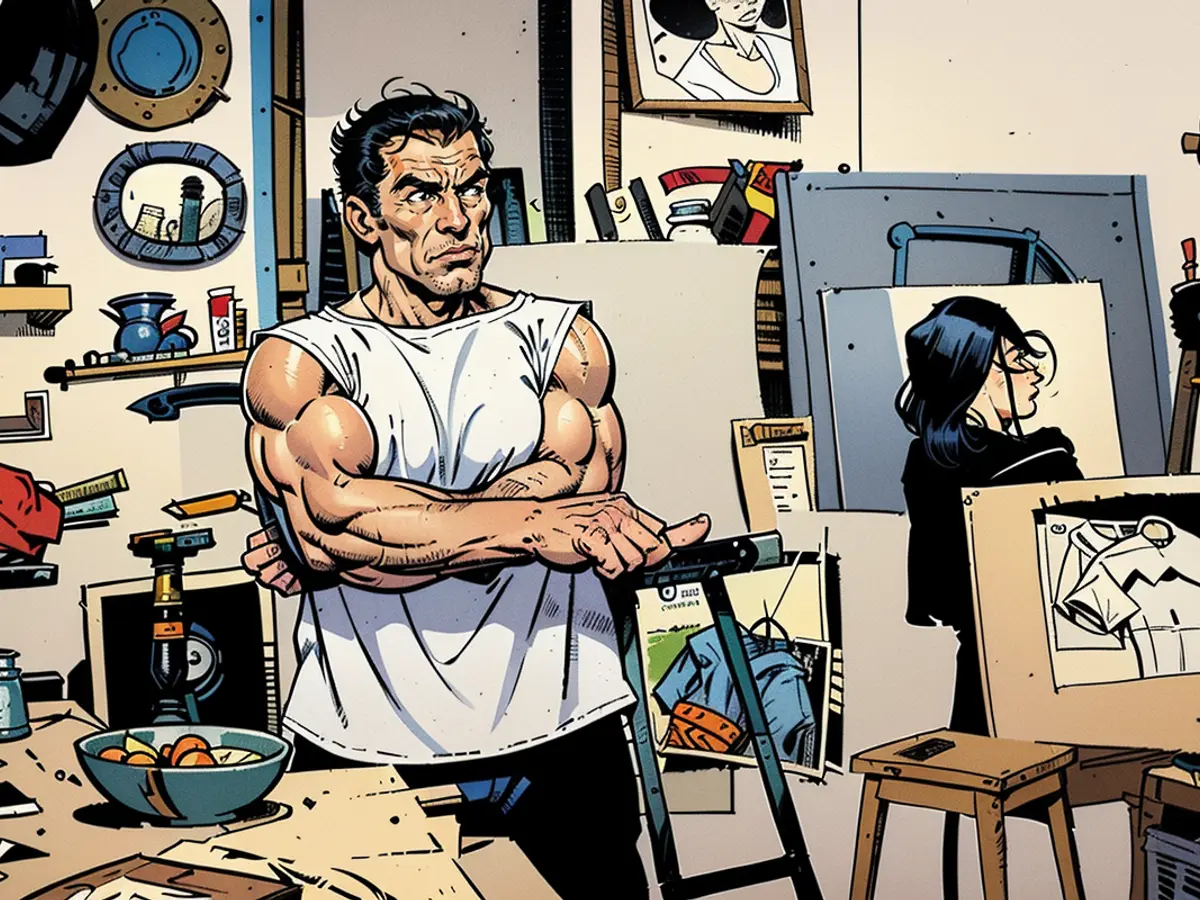The Discovery Unveils it as the Authentic Work of Picasso
A Spanish artist named Pablo Picasso, who lived an impressive 90-plus years and produced over 14,000 artworks, left a lasting impact on the world. Sadly, the prolific artist passed away in 1973, but his art continues to be highly sought after and fetches millions at auctions. Recently, an unidentified Picasso piece has emerged, and it comes as quite a surprise.
In 1962, a curious discovery was made by Italian antique dealer Luigi Lo Rosso in a Capri basement. Though he took the artwork - a distorted female face with vivid red lips - to Pompeii, he chose not to sell it. Instead, the peculiar painting was hung in a humble frame on the wall of his family's living room, where it remained for decades.
During those same years, the Lo Rosso family often considered getting rid of the painting, feeling it was disagreeable, according to Luigi's son, Andrea, who spoke with the British 'Guardian.' "My mother would often say it was ugly," Andrea recalls.
A Curious Signature
It was Andrea who, after years of contemplation, began to investigate the artist behind the painting. While flipping through an art history encyclopedia, he recognized the familiarity of Picasso's signature on the painting's edge. Andrea had previously pointed out the possible similarity to his father, but Luigi, not being well-versed in art or Picasso's work, did not give it much thought.
Andrea then reached out to the Picasso Foundation in Malaga, Spain, numerous times, hoping they might take an interest in his hypothesis. However, they showed little to no interest in exploring his claims.
Tests Confirm the Artwork's Authenticity
The family sought advice from expert art detective Maurizio Seracini, who helped them through years of testing. Cinzia Altieri, a handwriting expert and member of the scientific committee of the Arcadia Foundation, was eventually enlisted to analyze the signature on the painting.
Altieri spent months examining the signature compared to Picasso's original works. Her deduction? The signature was genuine, with no trace of forgery. As a result, the painting, believed to be worth six million euros, resembles Picasso's "Buste de femme (Dora Maar)," making it a likely depiction of the famous French photographer and artist, whose efforts inspired Picasso throughout their relationship.
Foundation Must Determine the Portrait's Authenticity
According to Il Giorno, a Picasso catalog features a seemingly identical painting, dubbed "Buste de femme Dora Maar." Luca Marcante, President of the Arcadia Foundation, has his doubts about the portrait's uniqueness, suggesting that other versions may exist.
"It could be that both are original," he stated, noting that it could simply be two slightly distinct portraits of the same subject painted at different times by Picasso. Marcante will now present his evidence to the Picasso Foundation, who holds the final authority in determining the painting's authenticity, currently stored in a Milan vault.
"I'm eager to hear their response," Andrea expresses, insisting that they have no intention of profiting off the discovery. "We were always focused on uncovering the truth, and we have no ambition to monetize this revelation."
The Lo Rosso family's discovery of the potentially Picasso-painted artwork took place during a time when the European Union was actively promoting and preserving cultural heritage.
If the Picasso Foundation confirms the painting's authenticity, it could significantly contribute to the European Union's collection of renowned artworks, enriching its cultural landscape.






